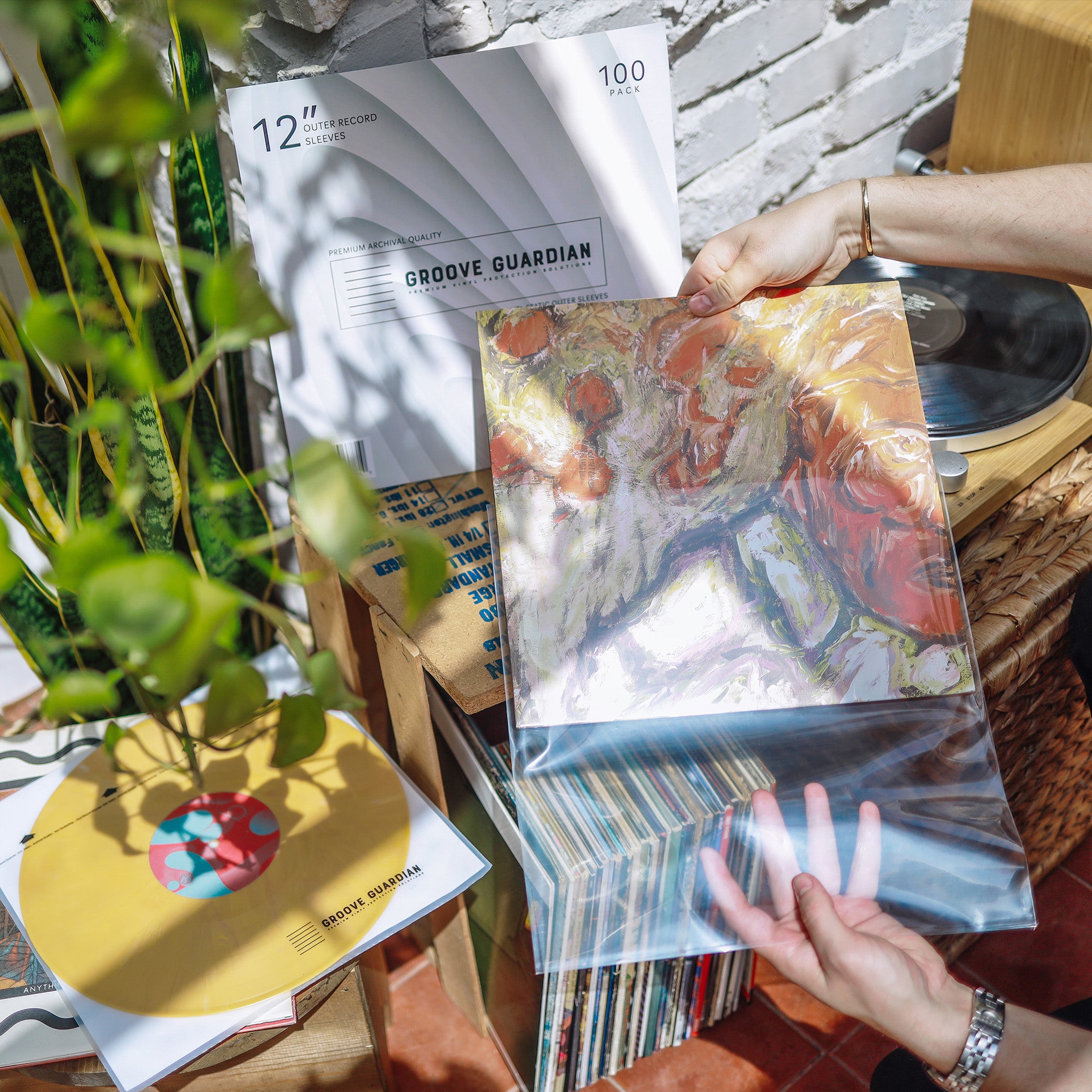
The Best Sleeves for Vinyl Records
Explore our products below and give your records the protection they deserve.
Inner Record Sleeves
3Mil HDPE + Rice Paper
Premium 12" LP Inner Record Sleeves
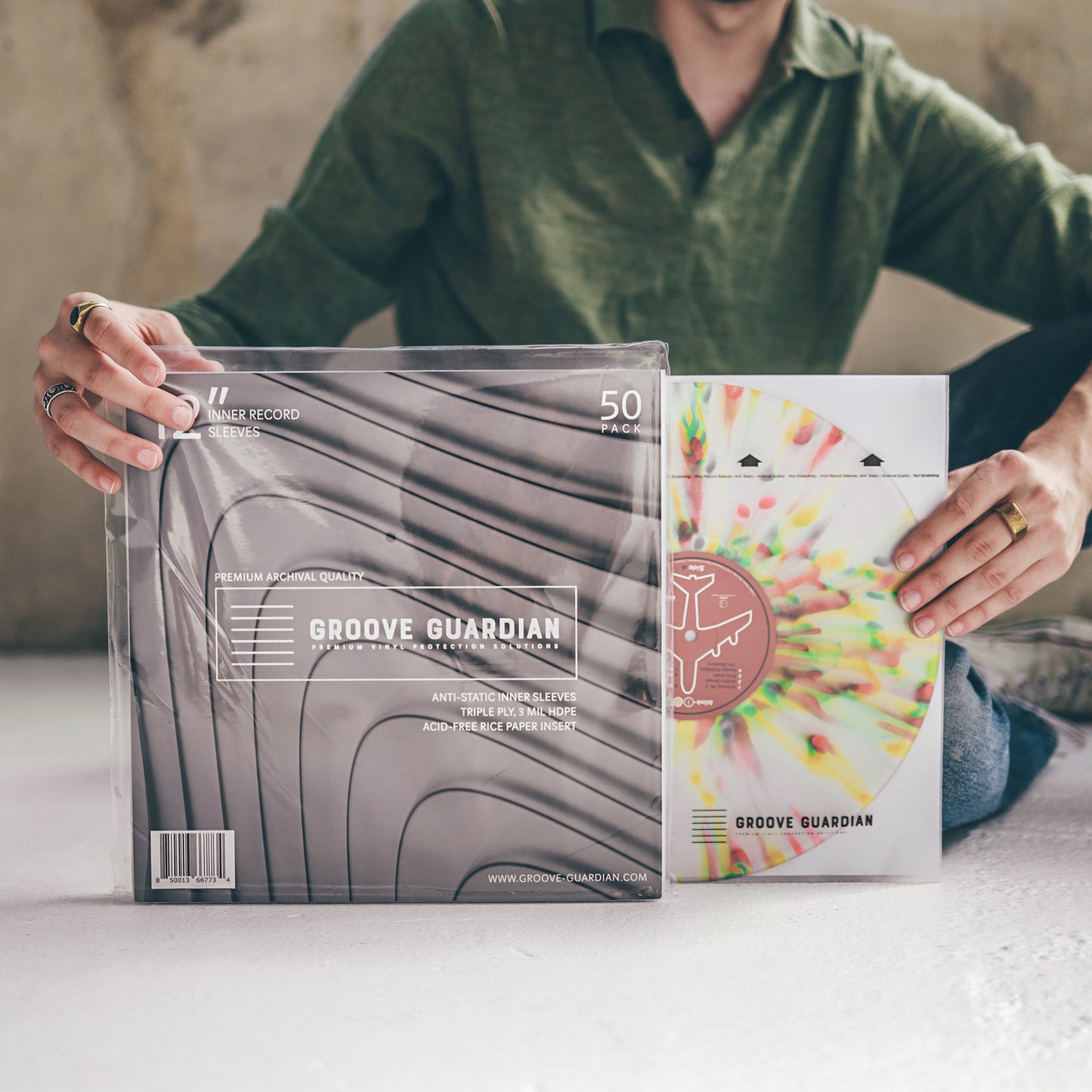

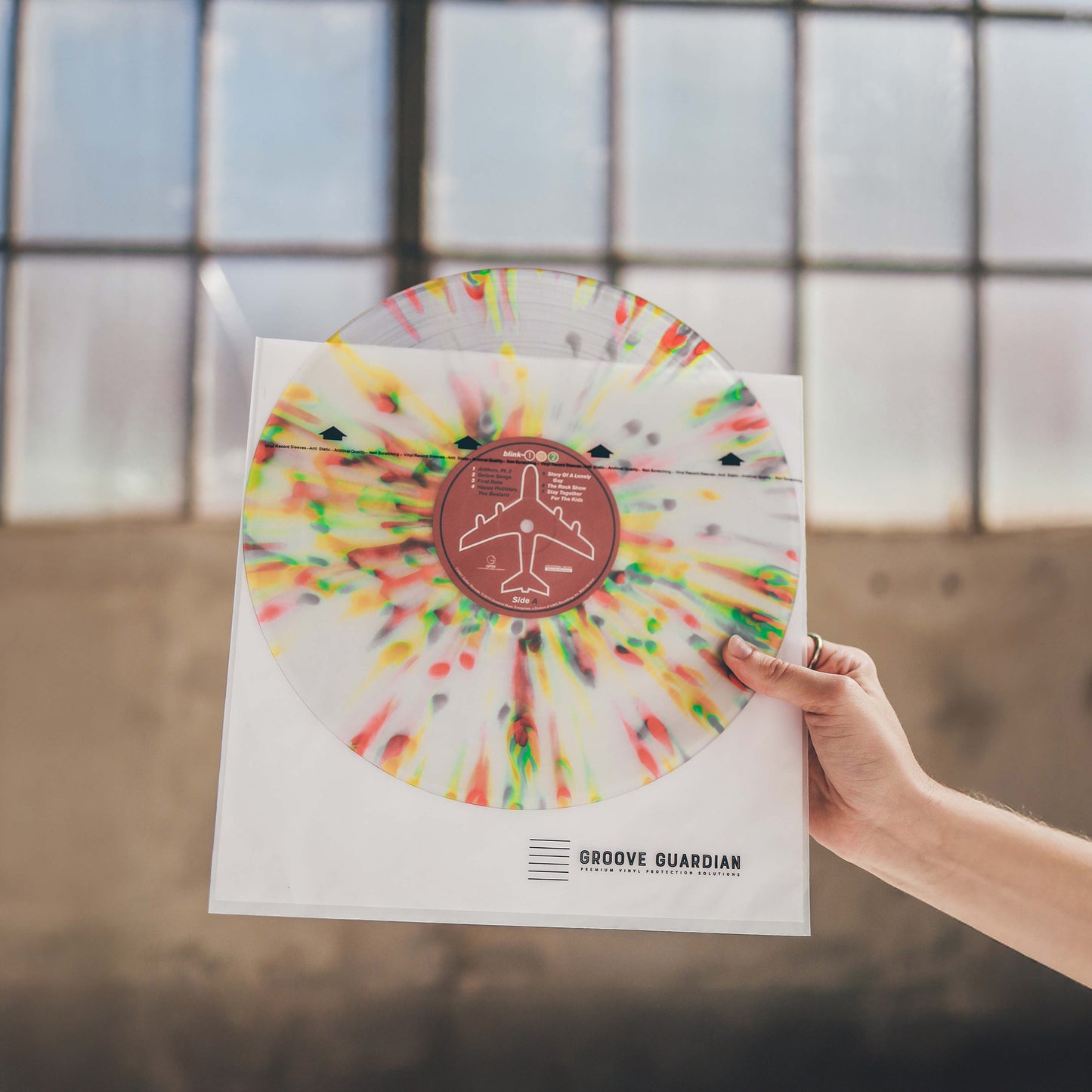
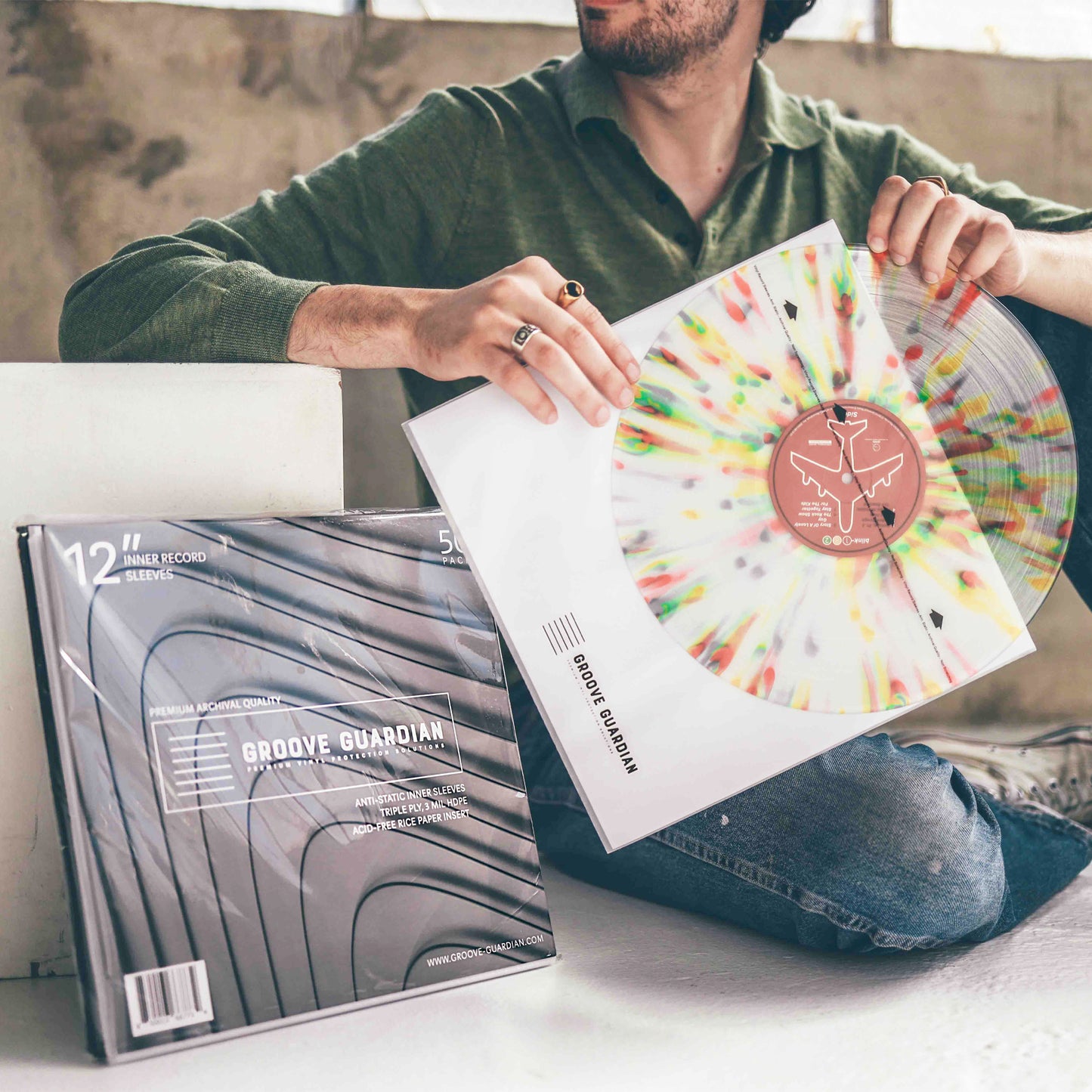
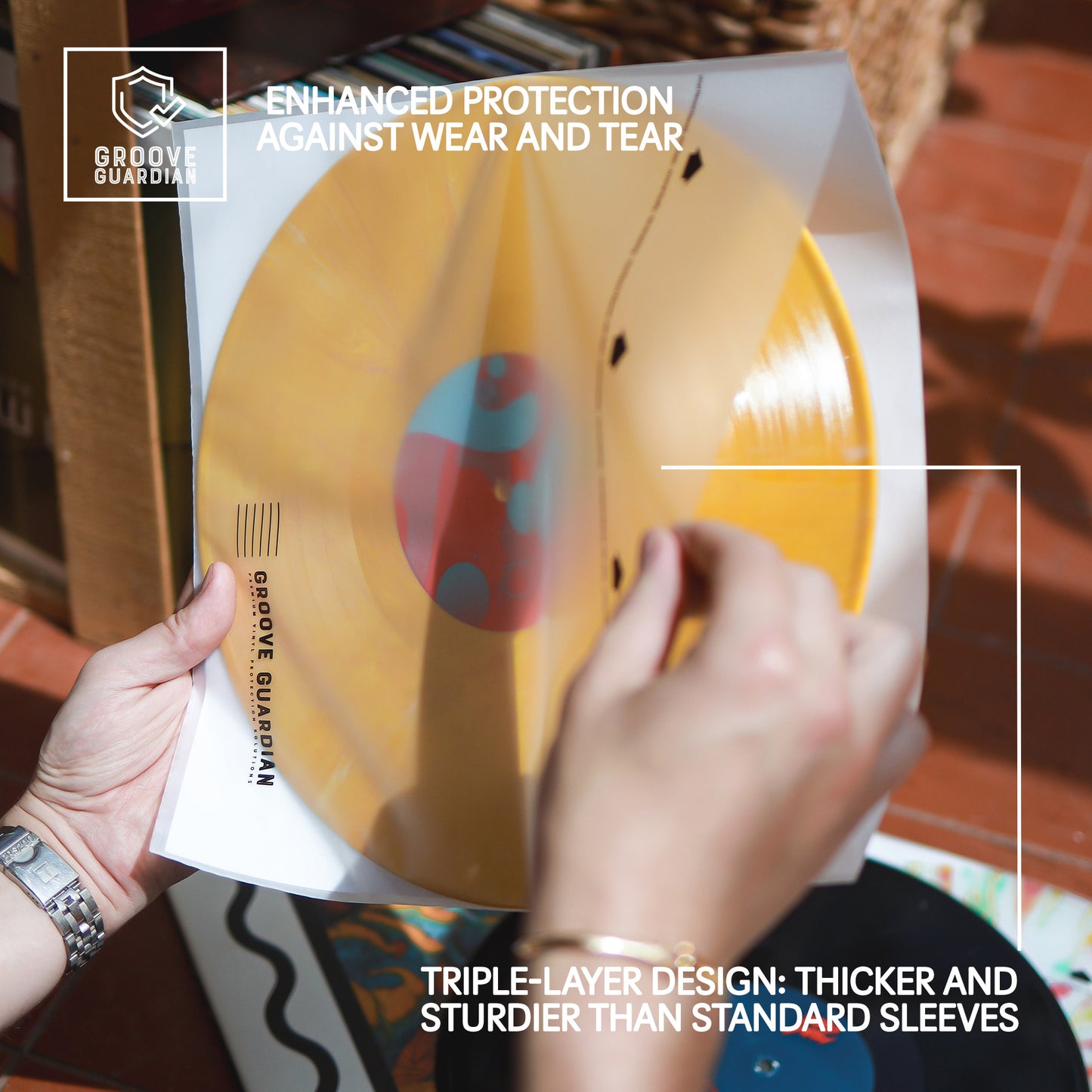
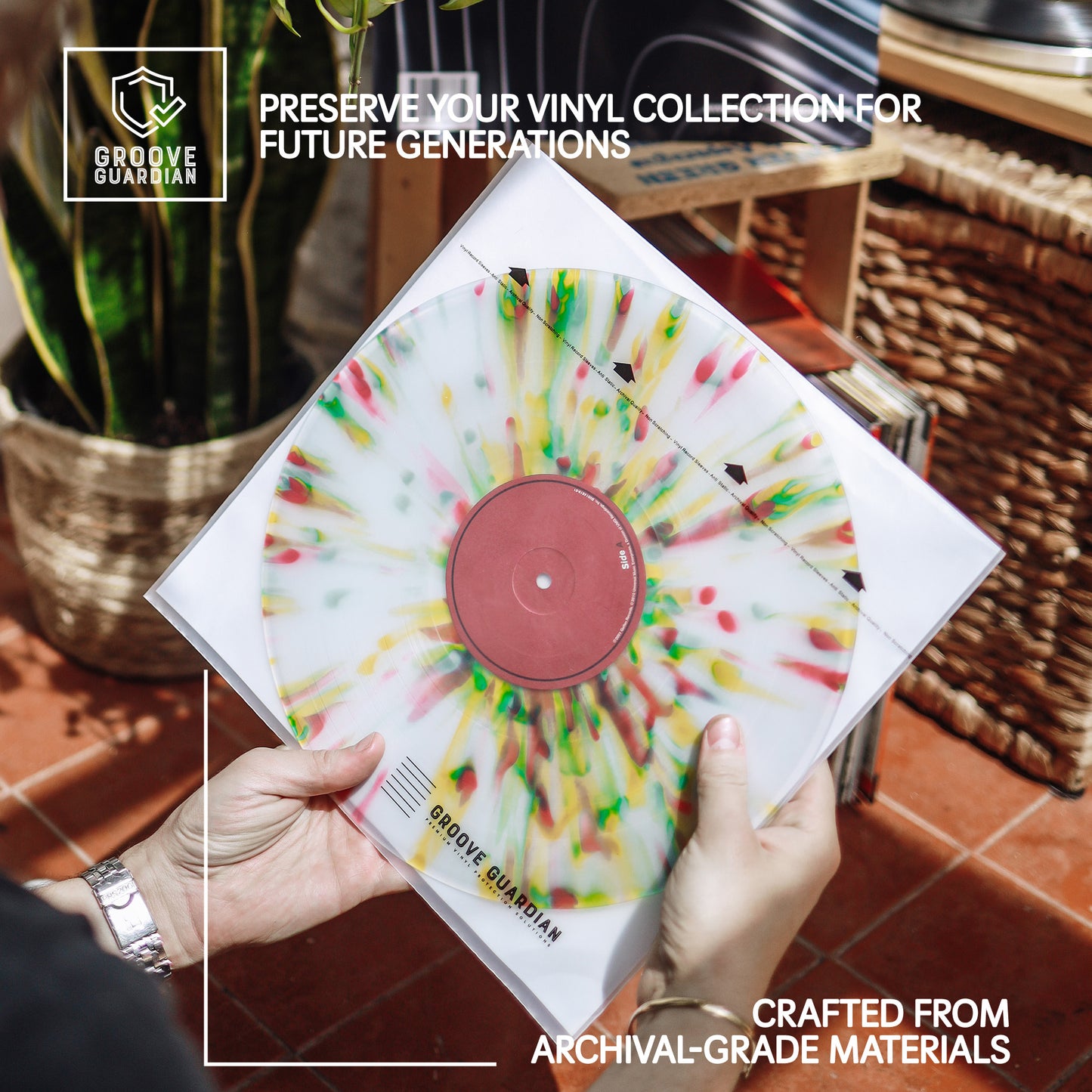
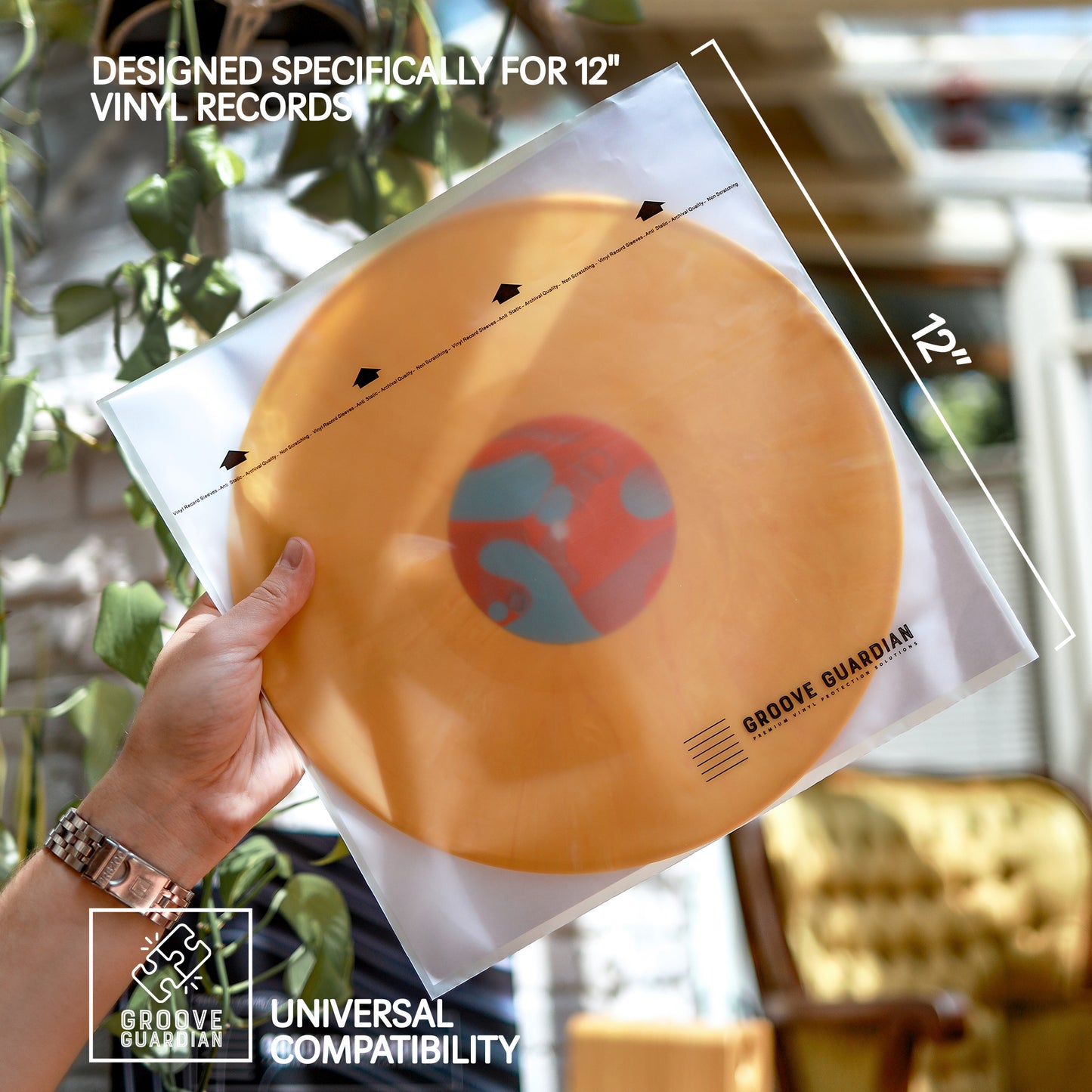
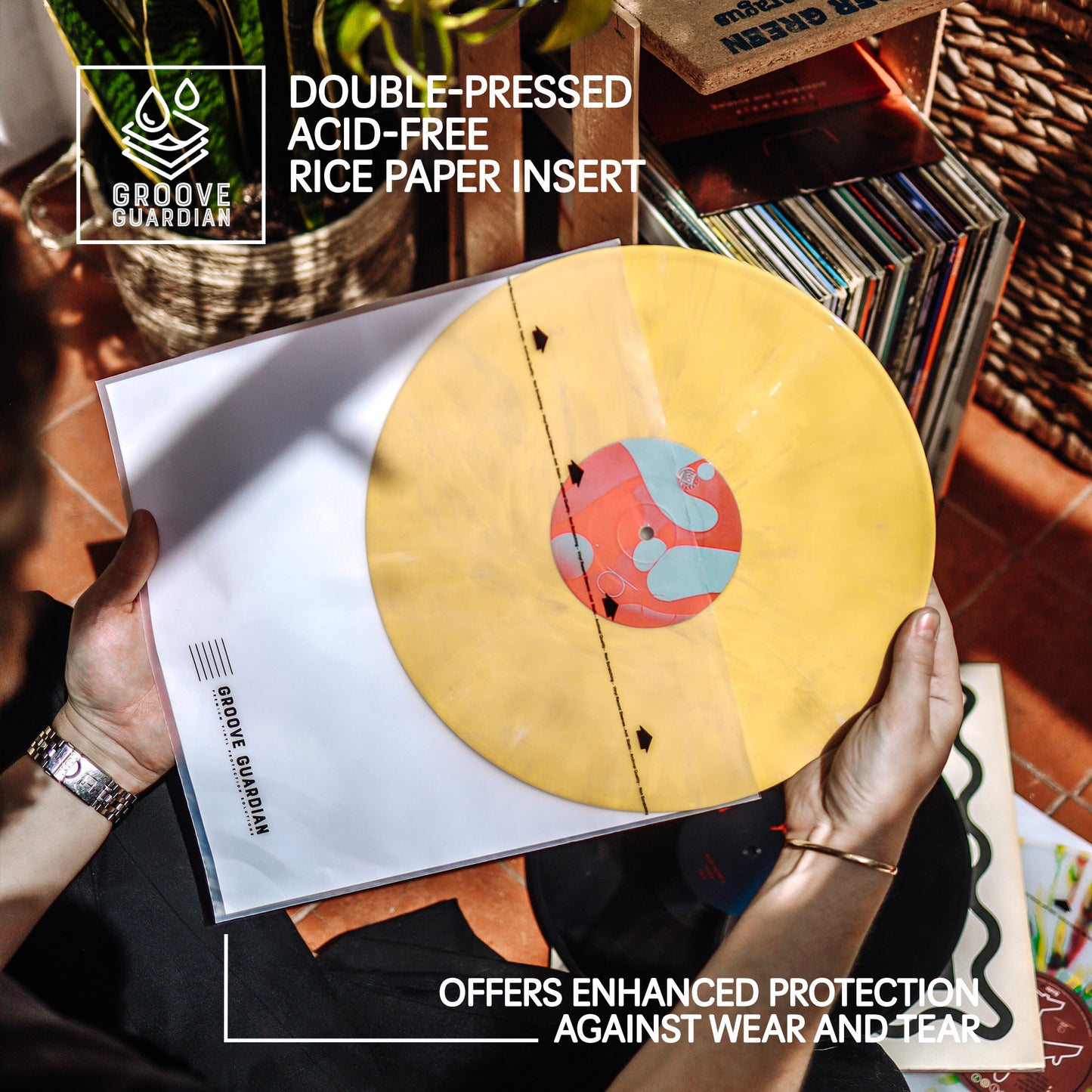
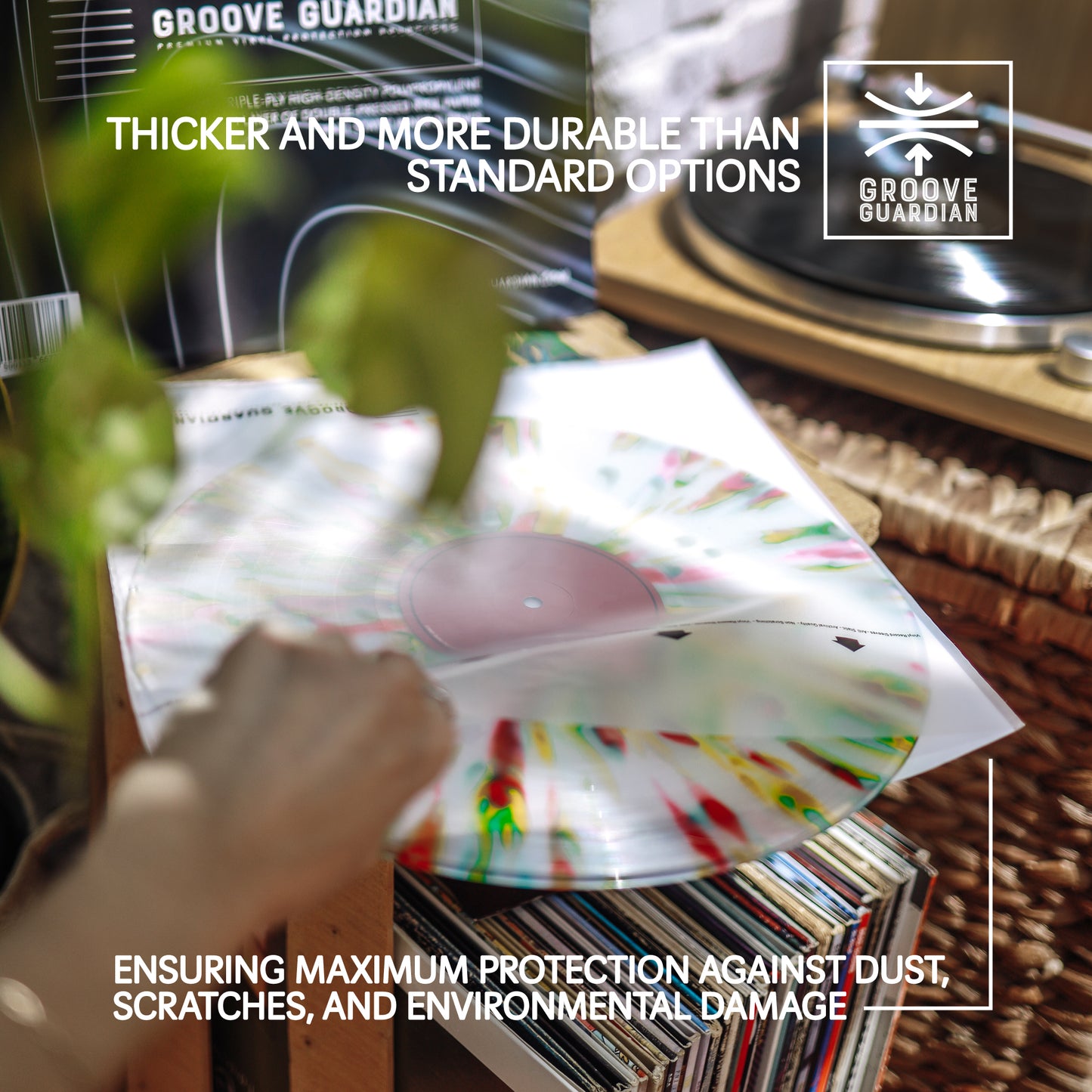
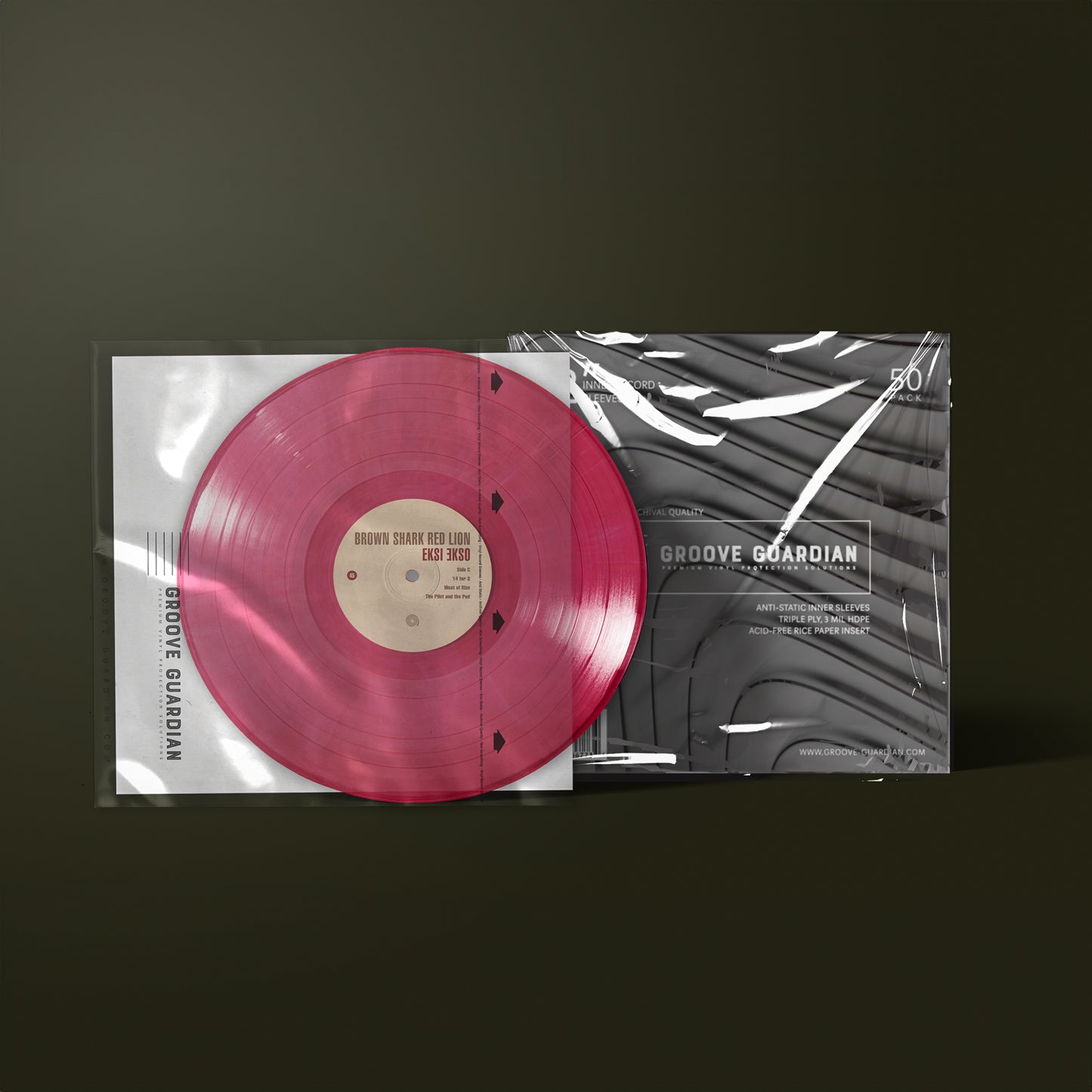
3Mil HDPE + 2X Rice Paper
Ultra-Premium 12" LP Inner Record Sleeves
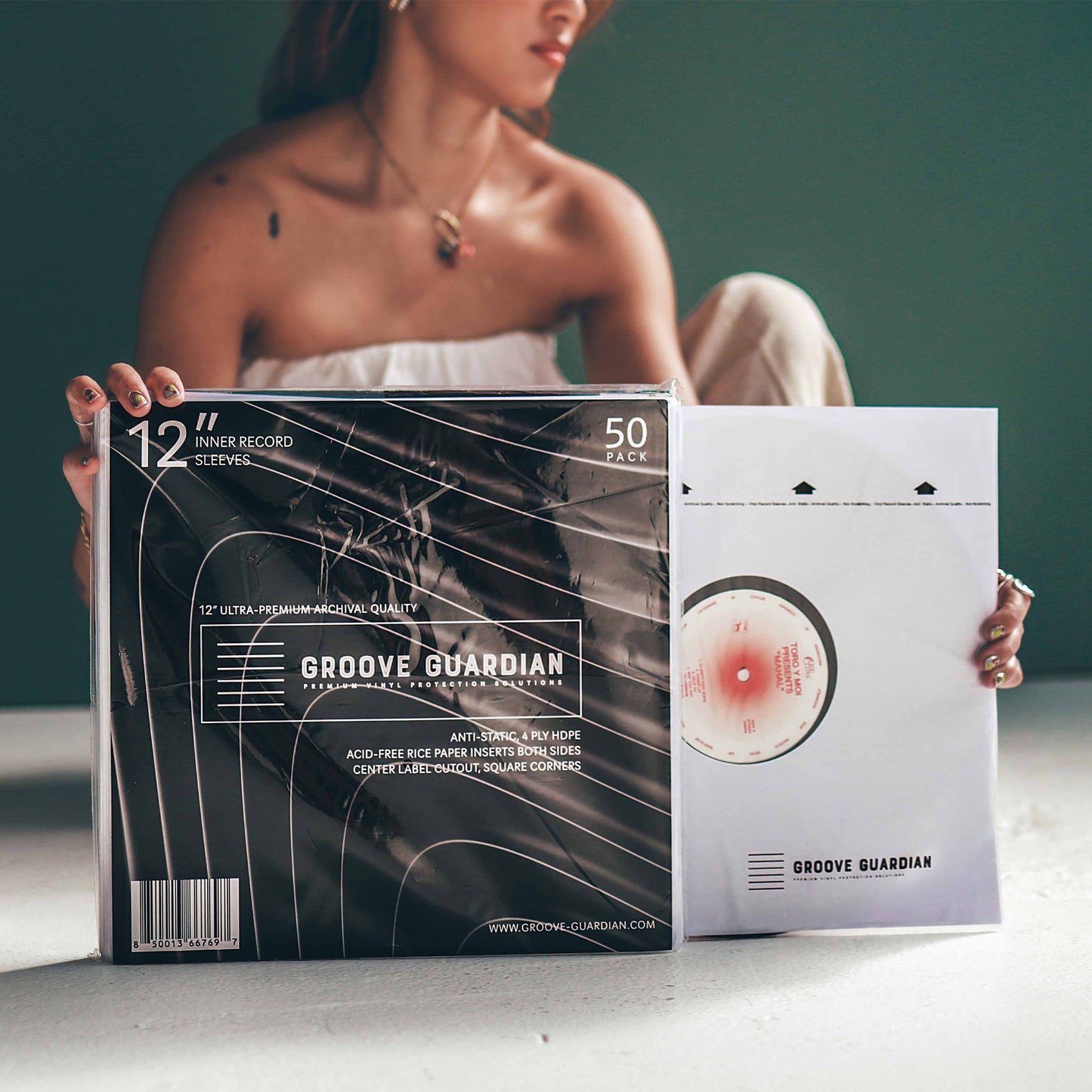
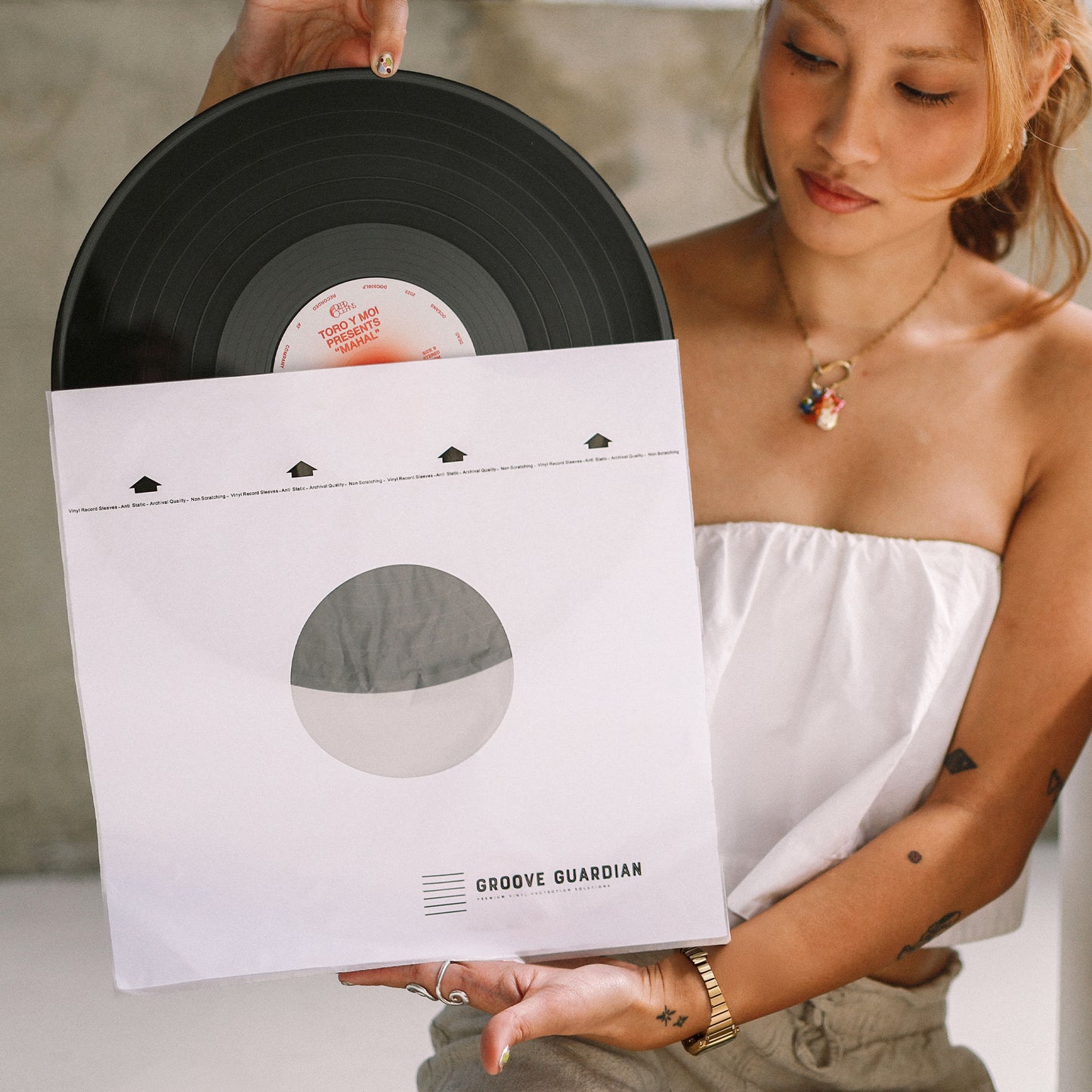

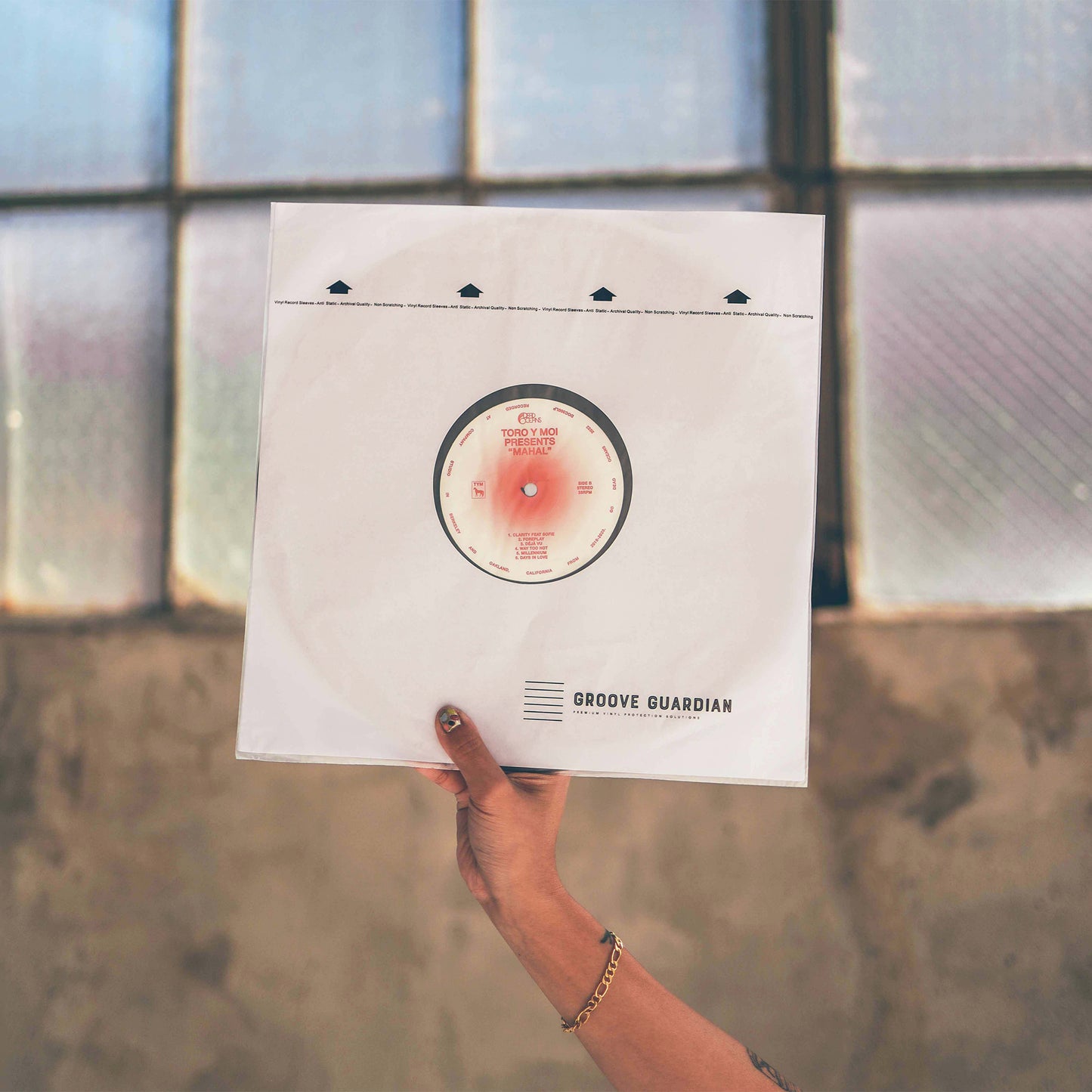

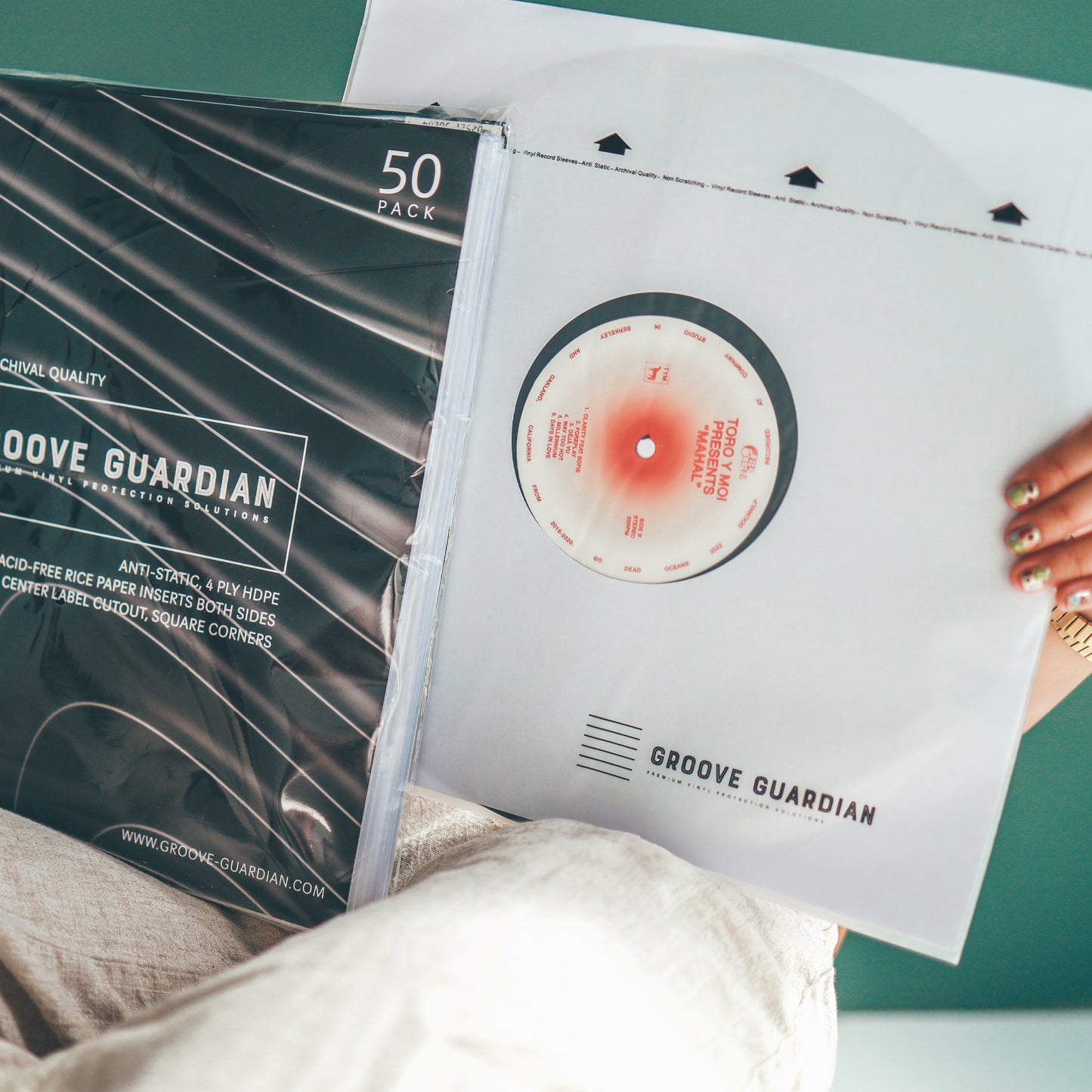
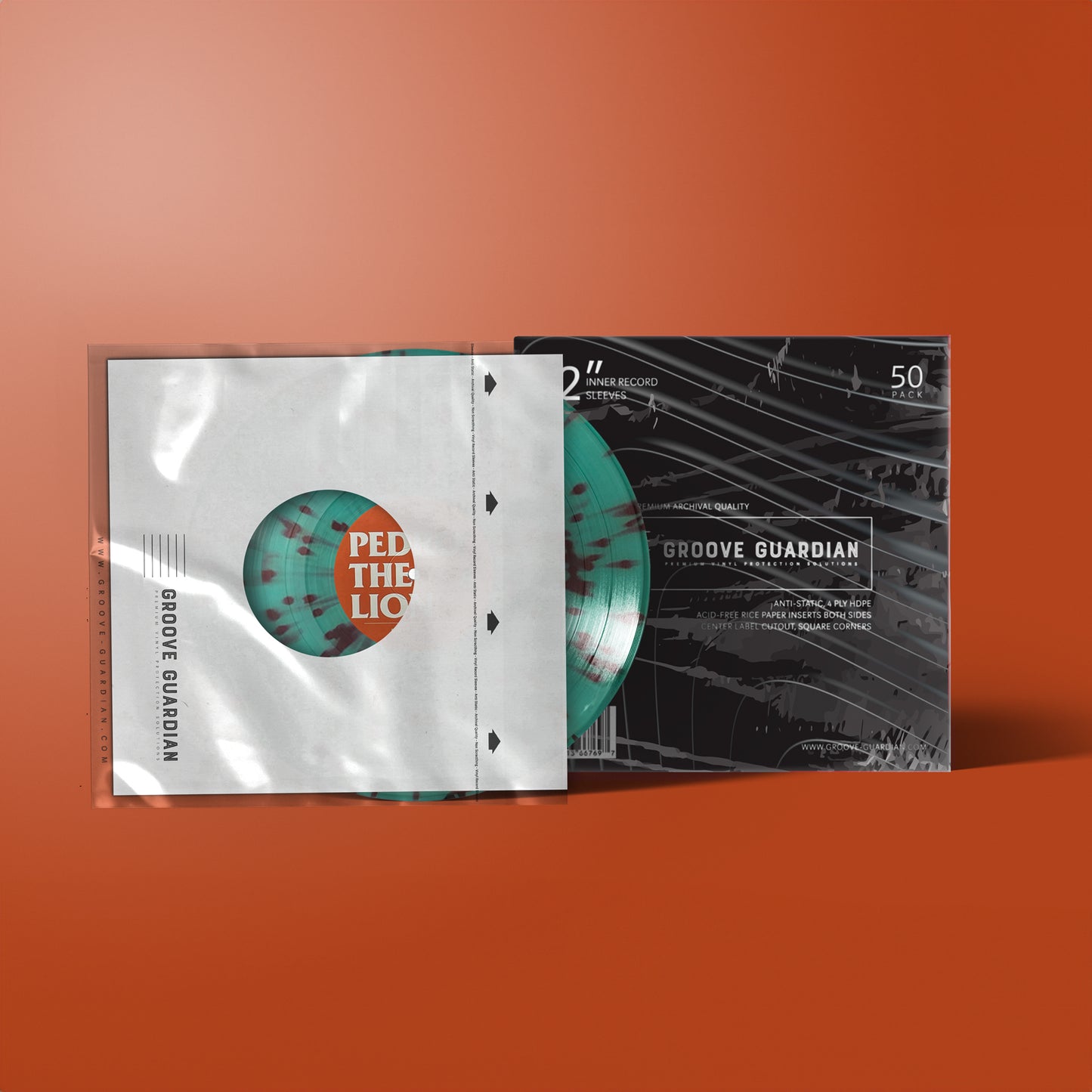
Groove Guardian
Black Poly-Lined Paper Record Sleeves
Share
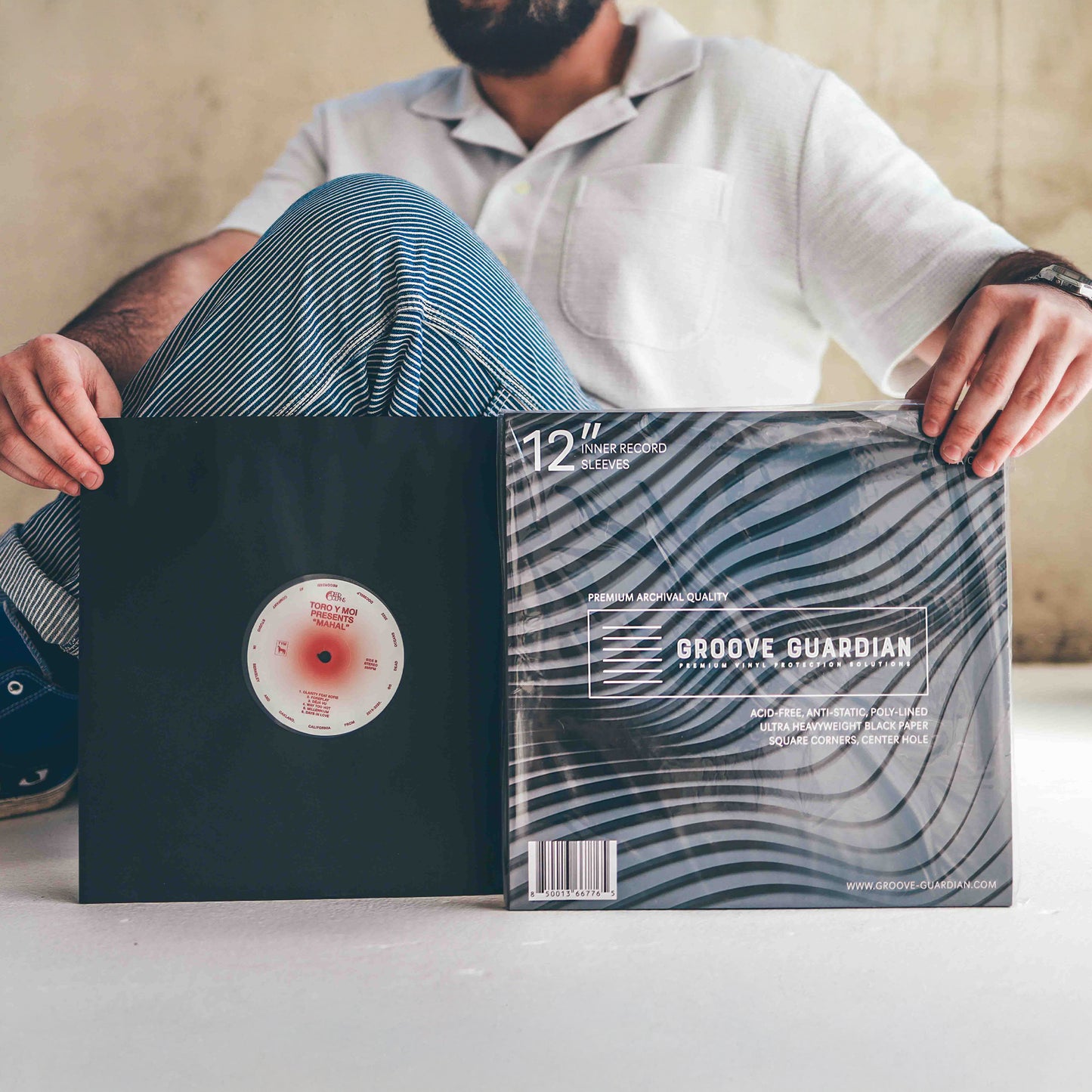
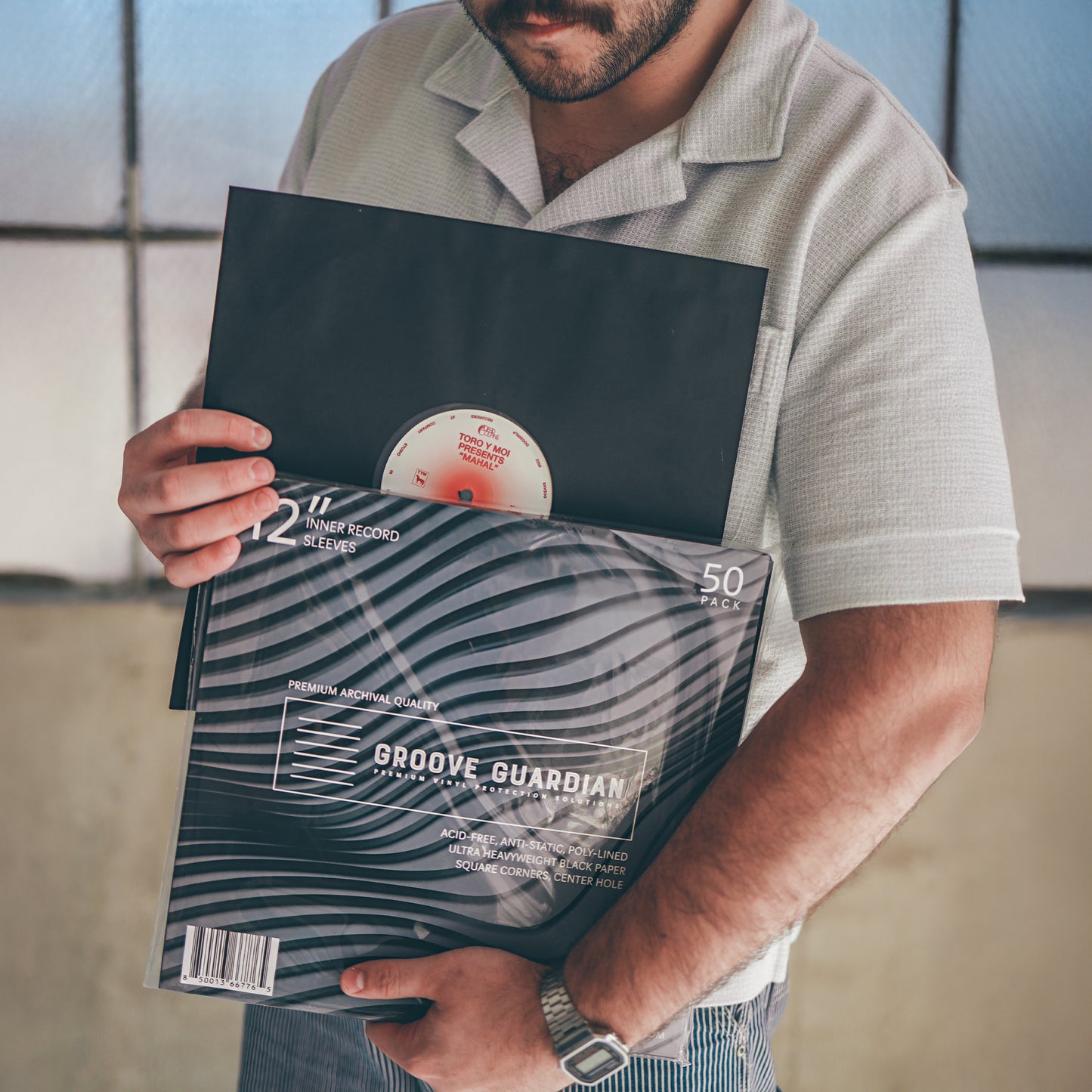
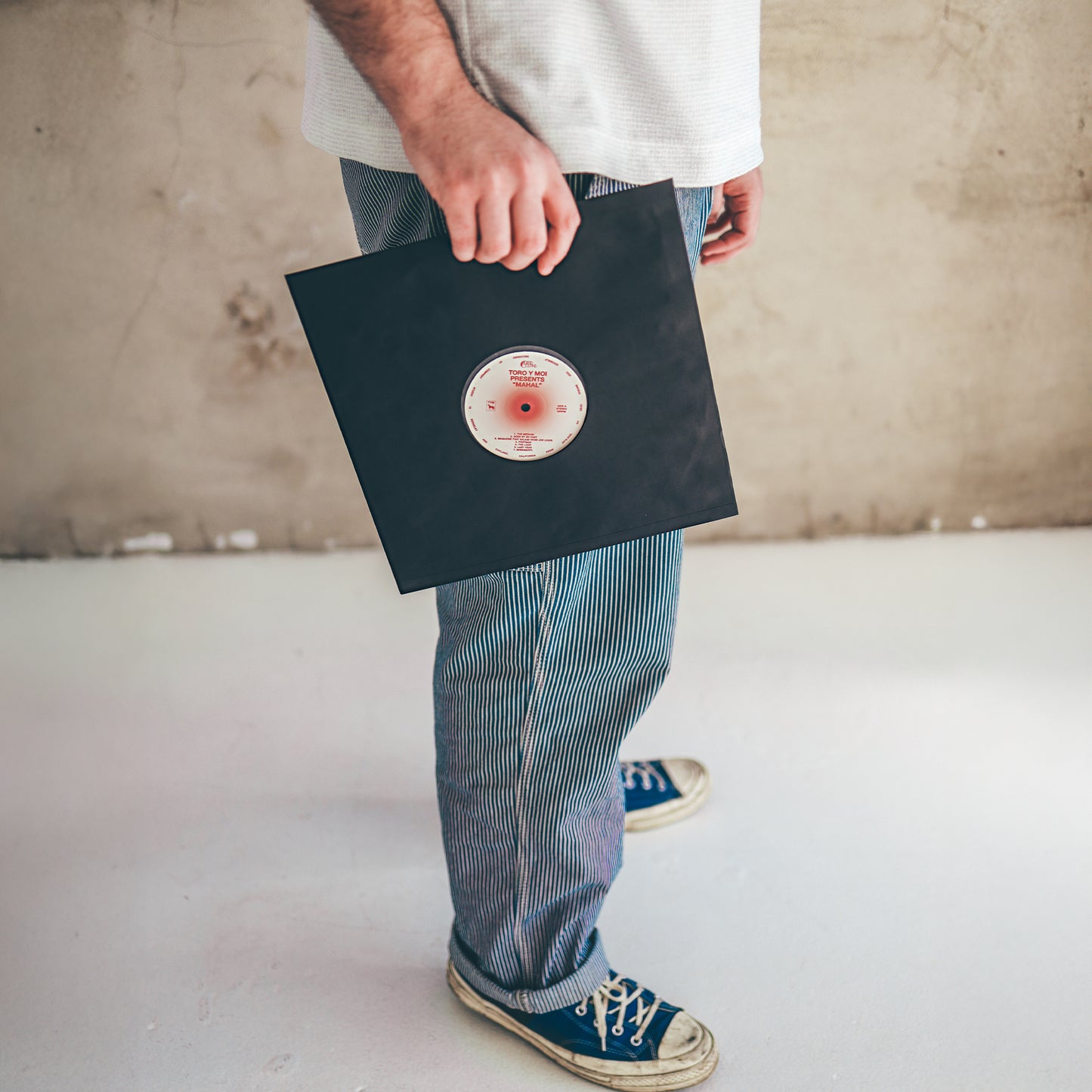
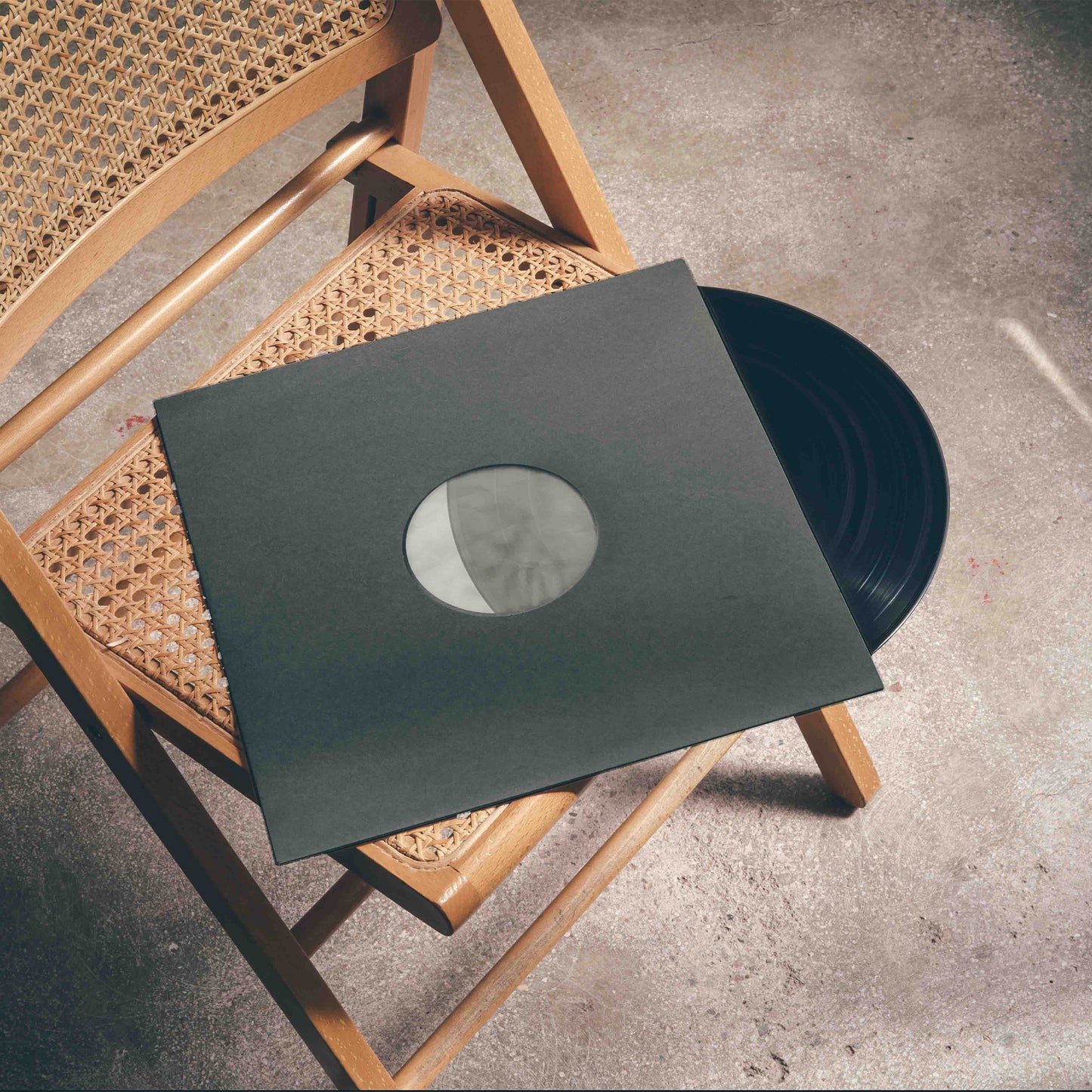
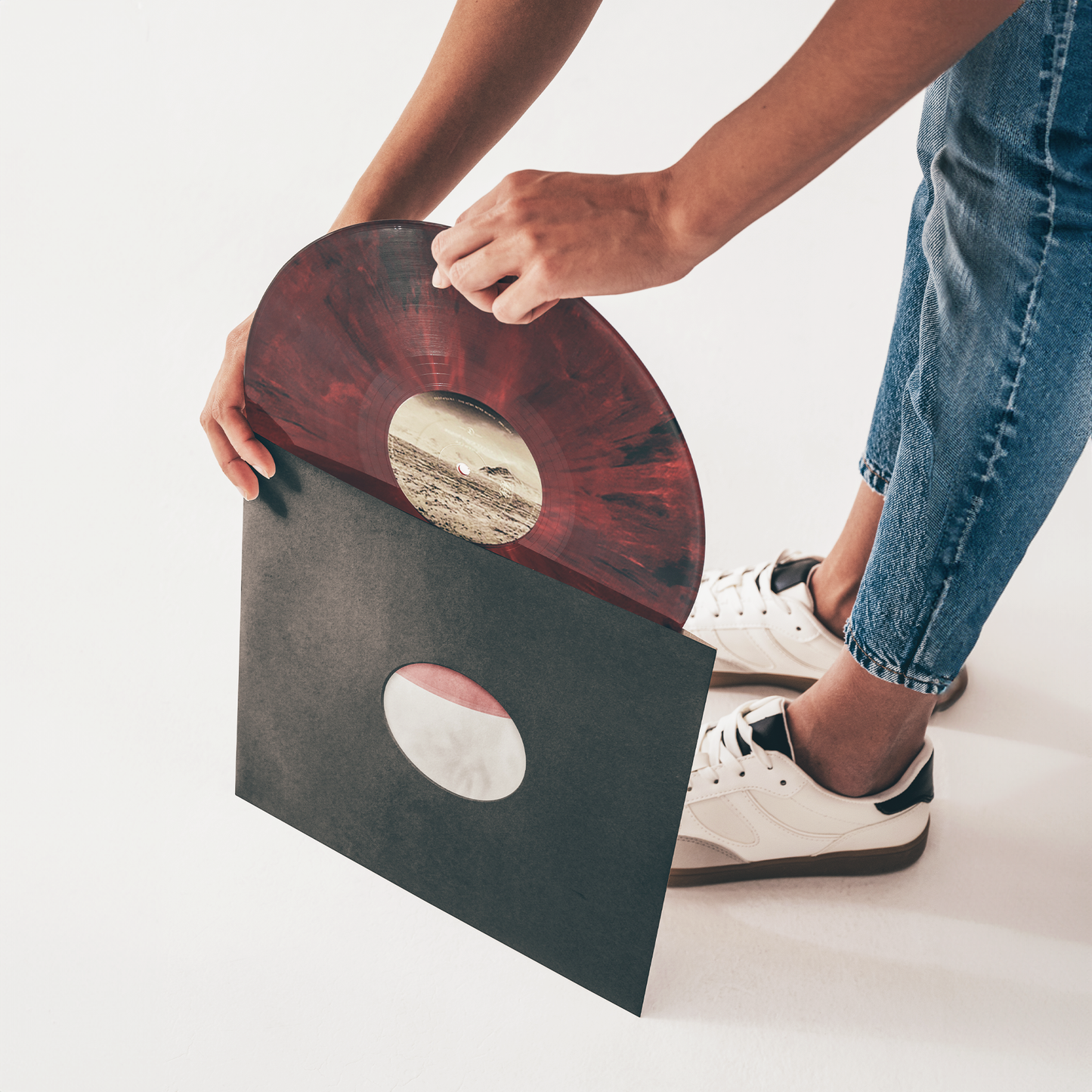
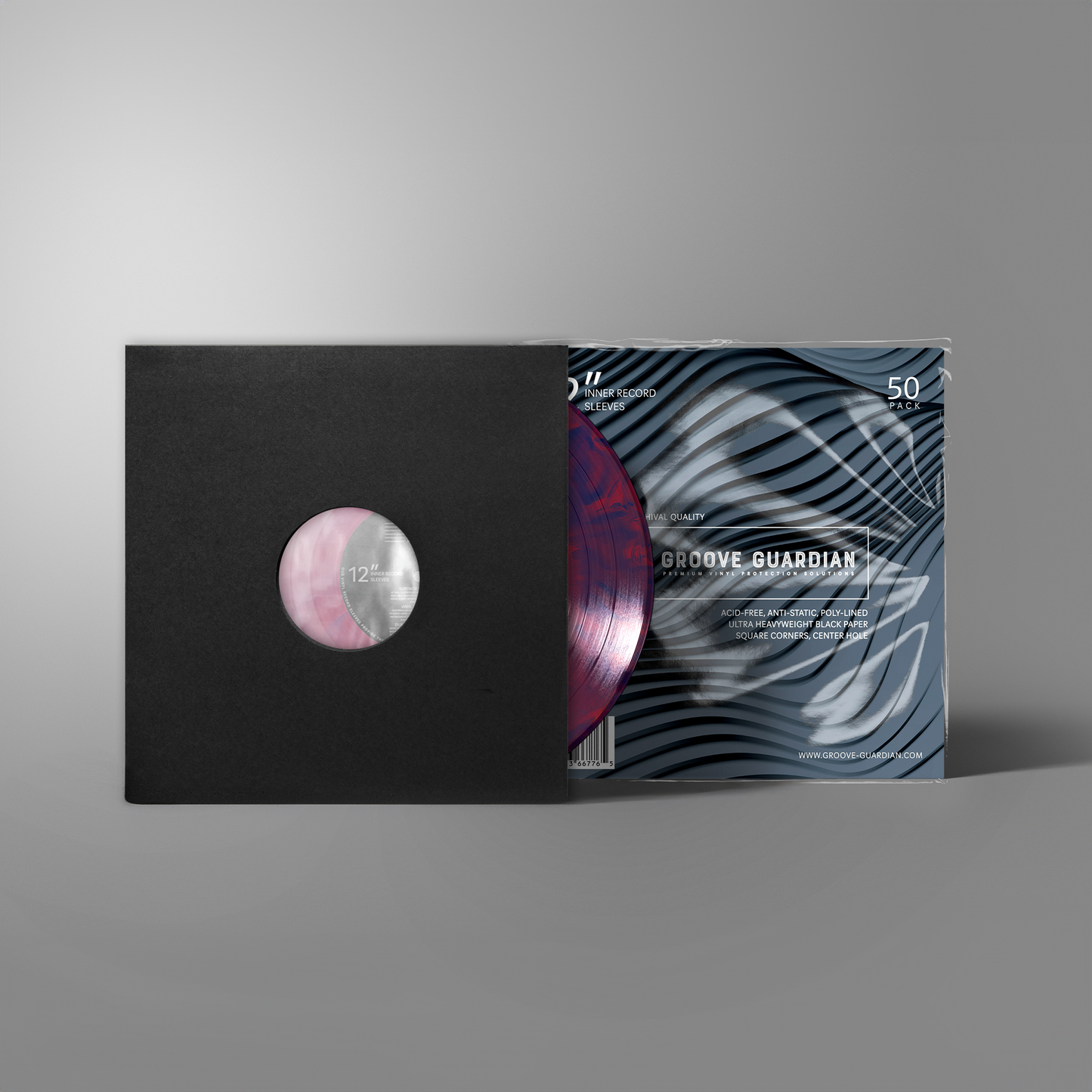
Outer Record Sleeves
3Mil Crystal Clear Polypropylene
Premium 12" LP Outer Record Sleeves
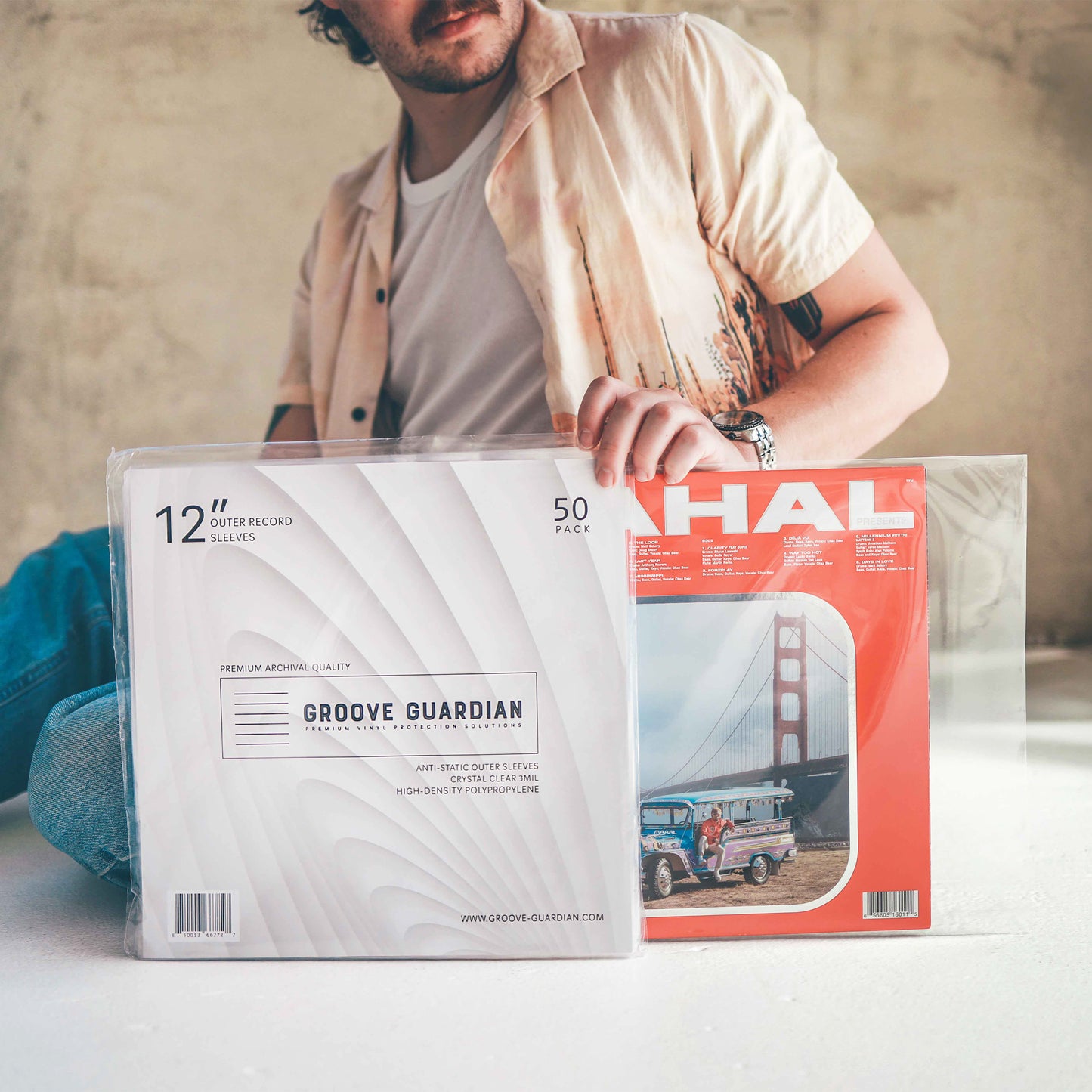
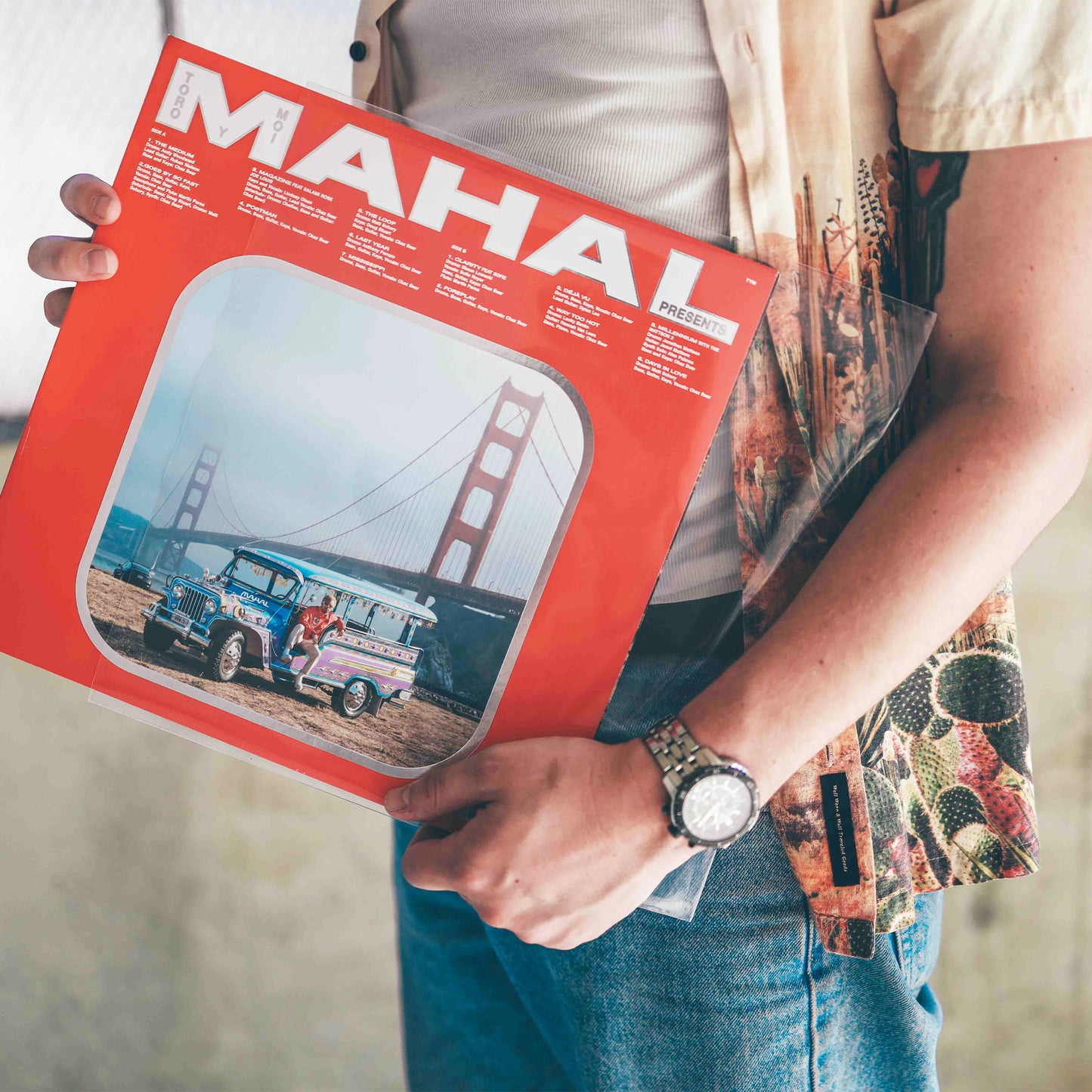
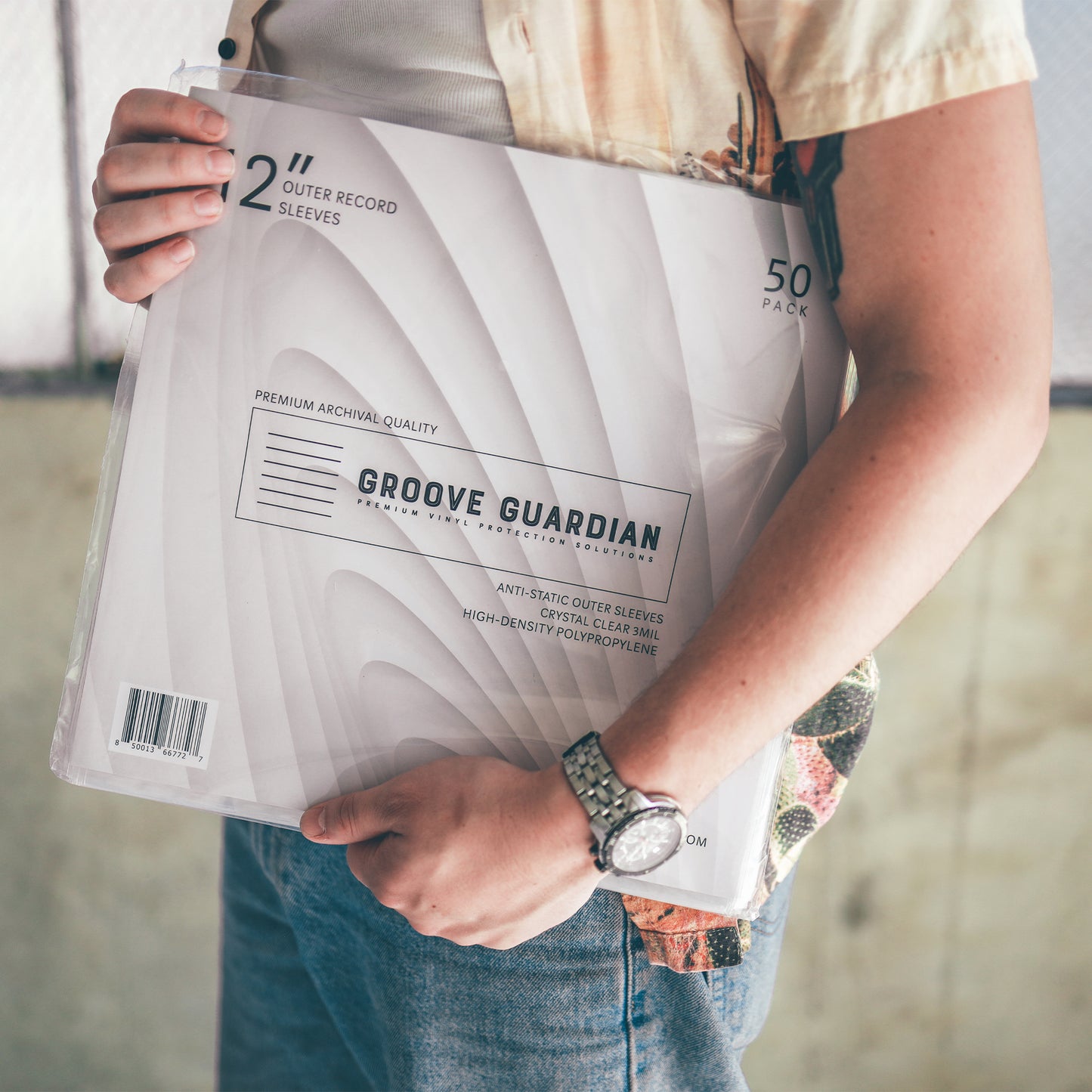
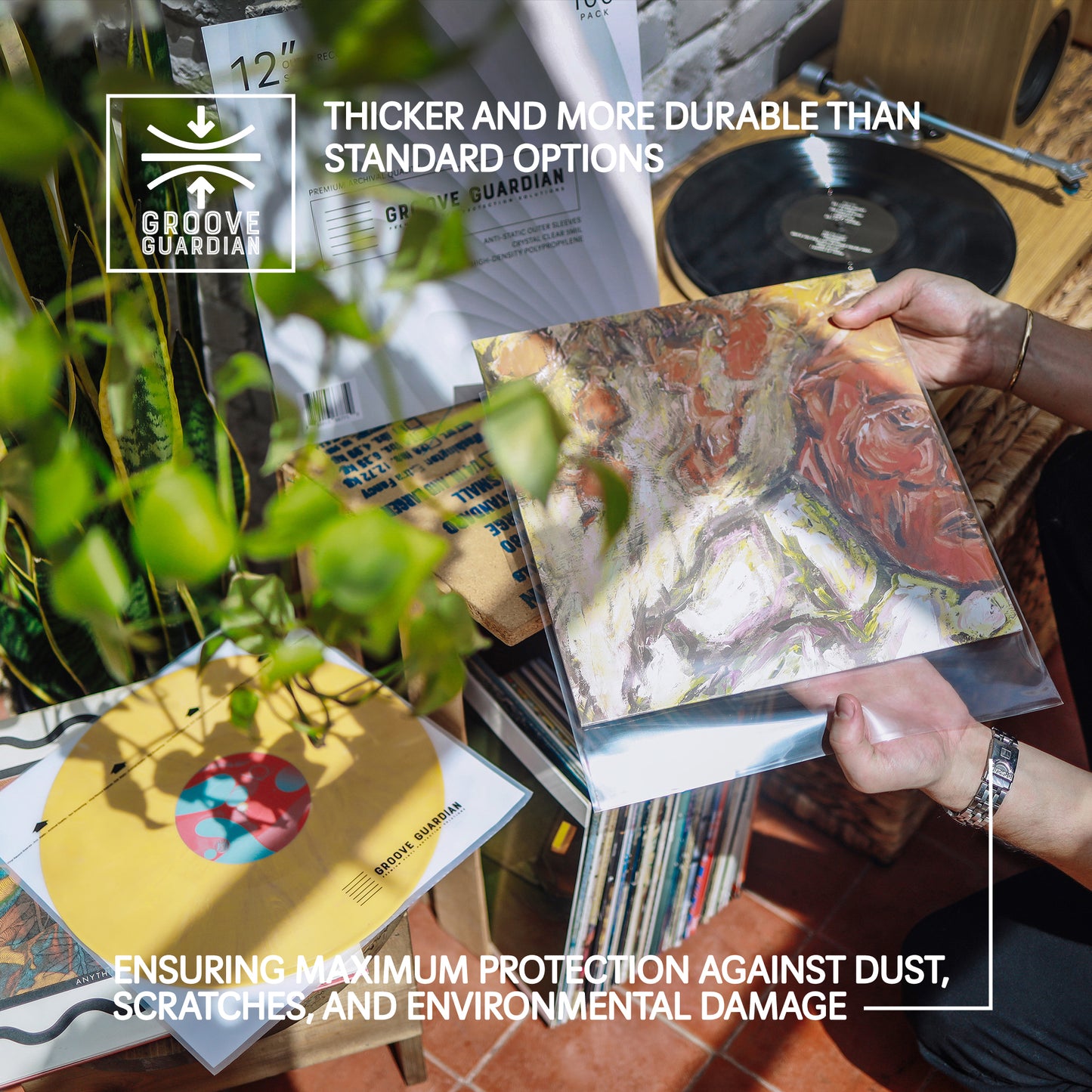
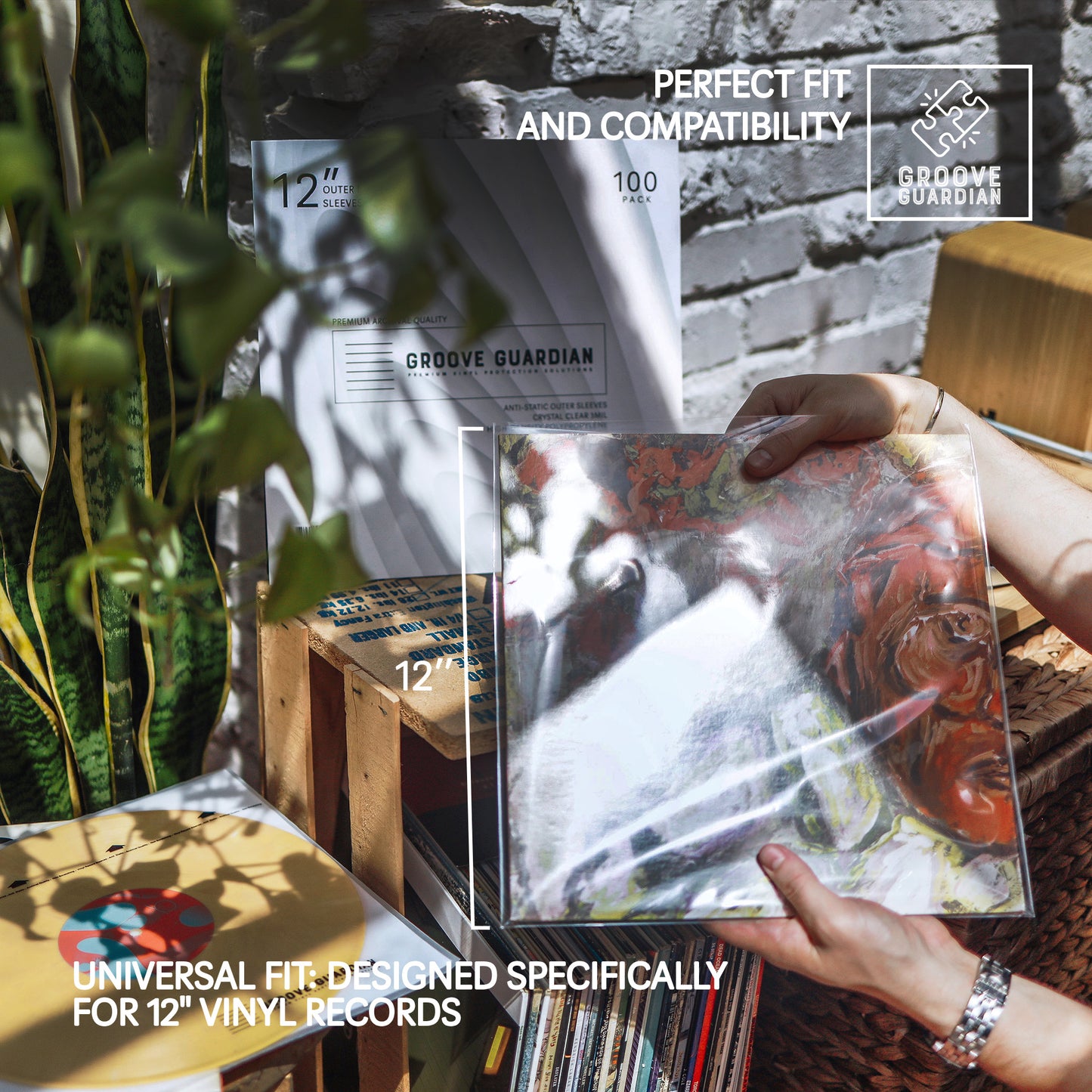


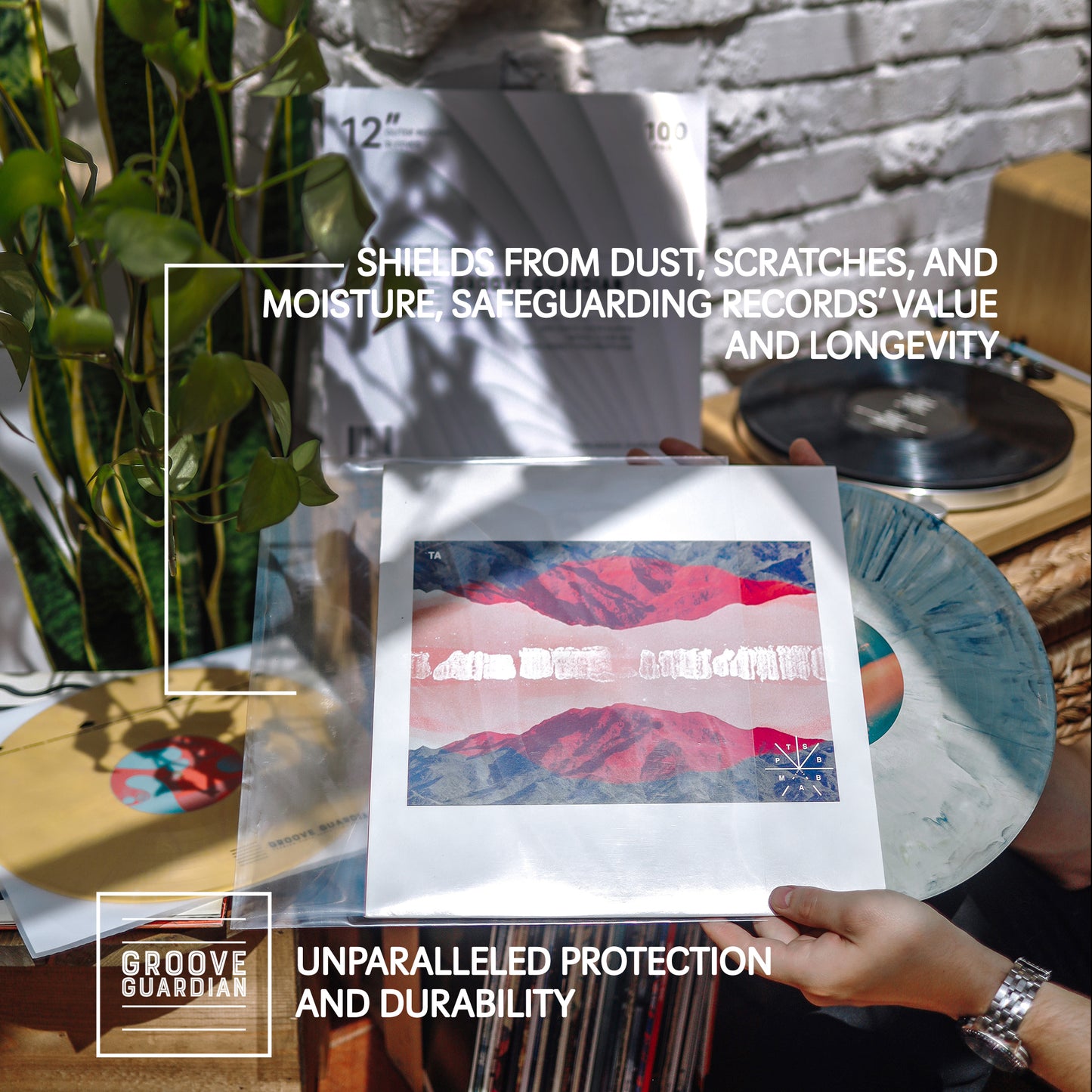
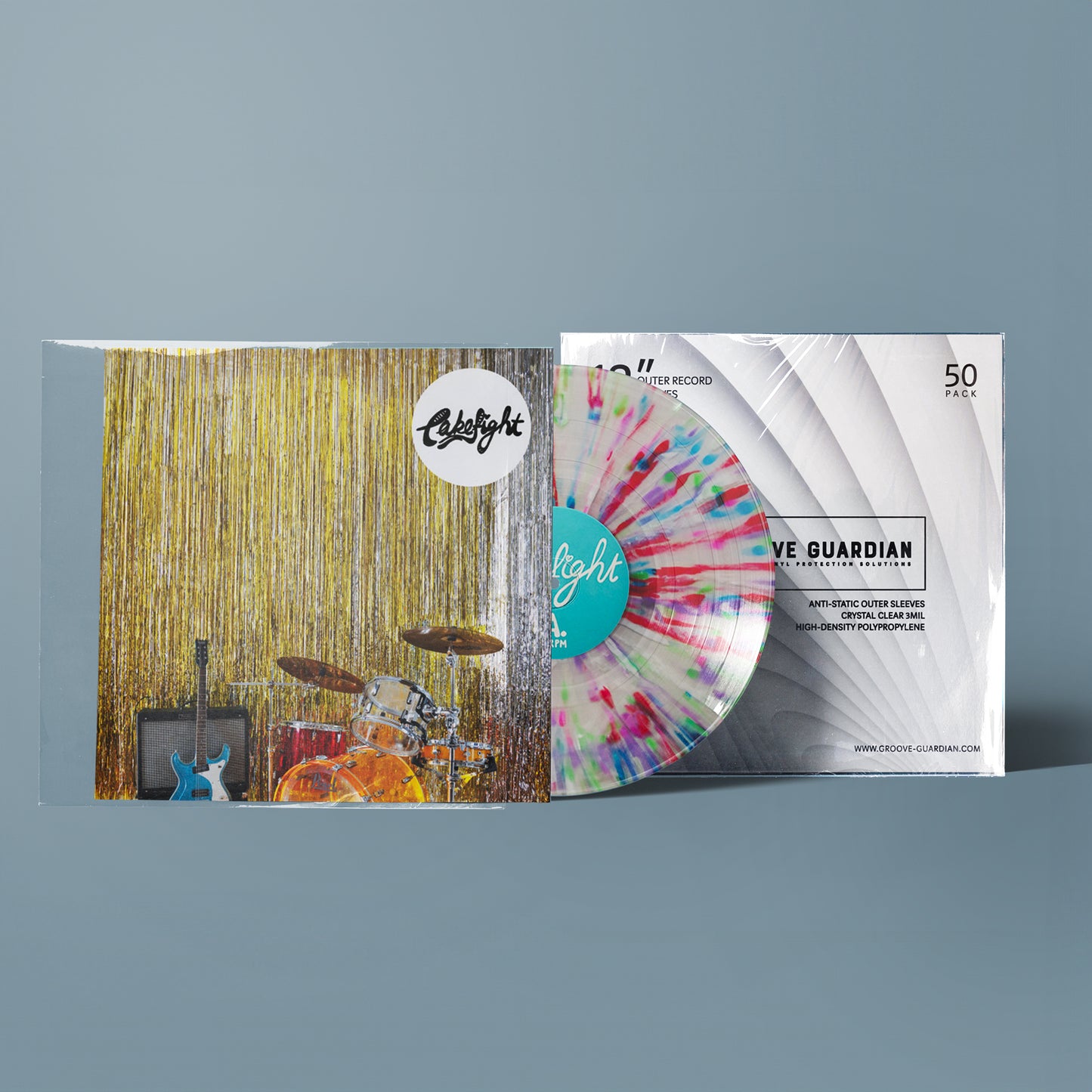
Frequently Asked Questions
F.A.Q.
Is it necessary to keep vinyl records in sleeves?
Yes, it's crucial.
Sleeves protect vinyl records and albums from dust, scratches, and static buildup, which can all damage the vinyl and affect sound quality. Using both inner and outer sleeves provides the best protection.
Which inner sleeves provide the best protection for LPs?
Anti-static polyethylene sleeves offer the best protection. They prevent static buildup, resist tearing, and don't leave paper residue on records like some plain paper sleeves can.
What's the proper way to utilize vinyl outer sleeves?
Slide the entire album (including its original cover and inner sleeve) into the outer sleeve.
Ensure the opening is at the top or to the side to prevent dust from entering. Use sleeves made of clear, archival-grade material for best results.
Can vinyl be damaged by paper sleeves?
Yes, especially low-quality or old paper sleeves.
They can leave paper dust on the record surface, cause static buildup, and potentially scratch the vinyl. Always opt for high-quality anti-static sleeves when possible.
Why do some collectors prefer to store vinyl outside of sleeves?
Some collectors do this for easier access or to display album art.
However, it's not recommended as it exposes records to dust, static, and potential damage. If display is important, consider wall mounts that allow records to be stored safely in their sleeves.
Is it safe to store vinyl records horizontally?
No, storing vinyl records horizontally can cause warping and put unnecessary pressure on the ones at the bottom of the stack. Try to always store records vertically to maintain their shape and quality.
Does leaning vinyl records cause any issues?
Yes, heavily leaning records can warp over time due to uneven pressure.
If you must lean them, ensure it's at a slight angle and for short periods only. Ideally, records should be stored perfectly vertical.
What's the ideal method for storing album collections?
Store albums vertically in a cool, dry place away from direct sunlight.
Use high-quality inner and outer sleeves. Ensure records aren't packed too tightly on the shelf. Consider specialized vinyl storage furniture for larger collections.
Are rice paper sleeves beneficial for vinyl preservation?
Yes, rice paper sleeves are excellent for vinyl preservation.
They're soft, anti-static, and don't generate dust like regular paper sleeves. They provide good protection against scratches and static buildup.
How often should record sleeves be replaced?
Replace inner sleeves when they show signs of wear, tearing, or generate dust.
For frequently played records, consider replacing inner sleeves annually. Outer sleeves typically last longer but should be replaced if they become cloudy or brittle.
What purpose do anti-static record sleeves serve?
Anti-static sleeves prevent the buildup of static electricity on vinyl records.
This reduces dust attraction and minimizes static-related pops and crackles during playback, helping to maintain sound quality.
What's the typical lifespan of well-maintained vinyl records?
Well-maintained vinyl records can last for many decades, even up to a century or more. Proper storage, handling, and cleaning are key to longevity. Even frequently played records can last a lifetime with good care.
Why are records typically packaged with two types of sleeves?
Records come with two sleeves for dual protection.
The inner sleeve protects the vinyl from dust and scratches, while the outer sleeve (usually the album cover) provides additional protection and displays the album artwork.
Tips & Topics About Vinyl
View all-
Top 7 Best Record Sleeves for Colored and Pictu...
Top 7 Best Record Sleeves for Colored and Picture Discs (2025 Guide) Colored and picture discs are more than just vinyl—they're visual treasures. Whether it’s a vibrant limited edition or...
Top 7 Best Record Sleeves for Colored and Pictu...
Top 7 Best Record Sleeves for Colored and Picture Discs (2025 Guide) Colored and picture discs are more than just vinyl—they're visual treasures. Whether it’s a vibrant limited edition or...
-
Gatefold Vinyl Records & Outer Sleeves Expl...
Introduction Gatefold LPs—those dramatic covers that open like a book—are a highlight in any vinyl collection. But big art and multi-disc layouts need the right protection. This guide breaks down...
Gatefold Vinyl Records & Outer Sleeves Expl...
Introduction Gatefold LPs—those dramatic covers that open like a book—are a highlight in any vinyl collection. But big art and multi-disc layouts need the right protection. This guide breaks down...
-
Why 12 Inch Vinyl Outer Sleeves for Collectors ...
Vinyl records aren't just a way to listen to music — they’re a lifestyle, a connection to history, and for many, a tangible expression of passion. Whether you’re hunting down...
Why 12 Inch Vinyl Outer Sleeves for Collectors ...
Vinyl records aren't just a way to listen to music — they’re a lifestyle, a connection to history, and for many, a tangible expression of passion. Whether you’re hunting down...
Shop Premium Vinyl Record Sleeves
-
Ultra-Premium 12" LP Inner Record Sleeves
Regular price $21.95 USDRegular price -
Premium 12" LP Outer Record Sleeves
Regular price From $19.95 USDRegular price -
Premium 12" LP Inner Record Sleeves
Regular price From $17.95 USDRegular price -
Black Poly-Lined Paper Record Sleeves
Regular price From $15.95 USDRegular price








